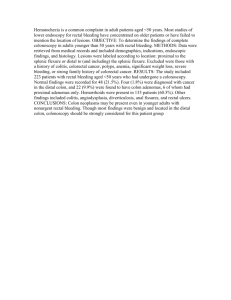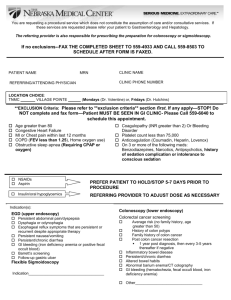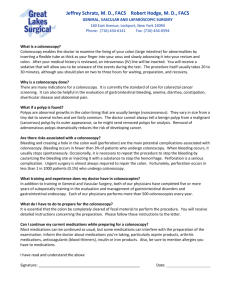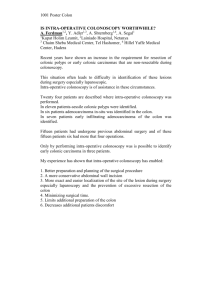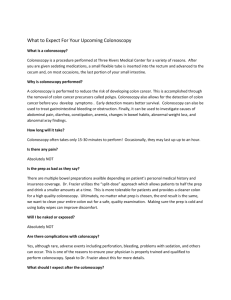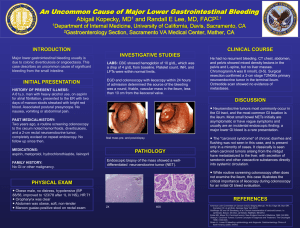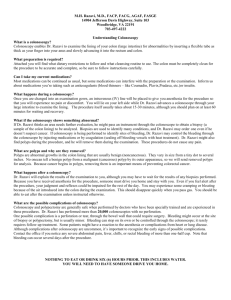Press Here To Change from HTML to Word Document
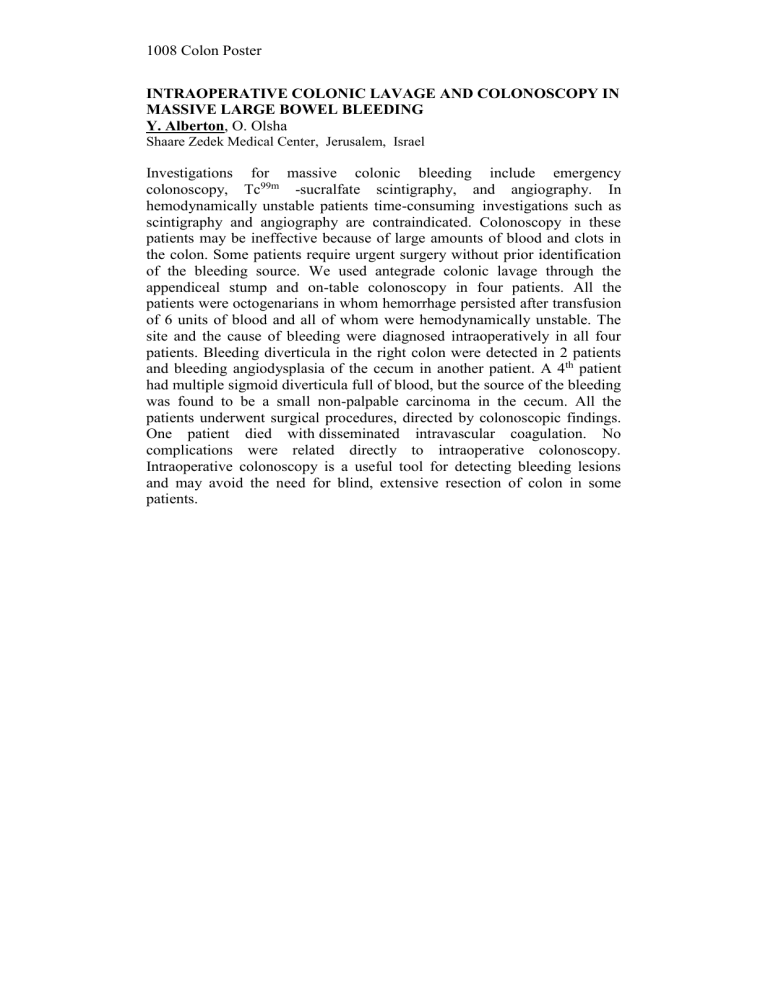
1008 Colon Poster
INTRAOPERATIVE COLONIC LAVAGE AND COLONOSCOPY IN
MASSIVE LARGE BOWEL BLEEDING
Y. Alberton , O. Olsha
Shaare Zedek Medical Center, Jerusalem, Israel
Investigations for massive colonic bleeding include emergency colonoscopy, Tc 99m -sucralfate scintigraphy, and angiography. In hemodynamically unstable patients time-consuming investigations such as scintigraphy and angiography are contraindicated. Colonoscopy in these patients may be ineffective because of large amounts of blood and clots in the colon. Some patients require urgent surgery without prior identification of the bleeding source. We used antegrade colonic lavage through the appendiceal stump and on-table colonoscopy in four patients. All the patients were octogenarians in whom hemorrhage persisted after transfusion of 6 units of blood and all of whom were hemodynamically unstable. The site and the cause of bleeding were diagnosed intraoperatively in all four patients. Bleeding diverticula in the right colon were detected in 2 patients and bleeding angiodysplasia of the cecum in another patient. A 4 th
patient had multiple sigmoid diverticula full of blood, but the source of the bleeding was found to be a small non-palpable carcinoma in the cecum. All the patients underwent surgical procedures, directed by colonoscopic findings.
One patient died with disseminated intravascular coagulation. No complications were related directly to intraoperative colonoscopy.
Intraoperative colonoscopy is a useful tool for detecting bleeding lesions and may avoid the need for blind, extensive resection of colon in some patients.
